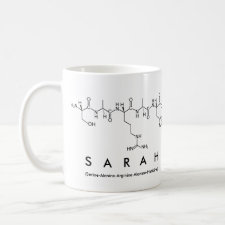
Authors: De Smet D, Kodeck V, Dubruel P, Van Peteghem C, Schacht E, De Saeger S
Article Title: Design of an imprinted clean-up method for mycophenolic acid in maize.
Publication date: 2011
Journal: Journal of Chromatography A
Volume: 1218
Issue: (8)
Page numbers: 1122-1130.
DOI: 10.1016/j.chroma.2010.12.085
Alternative URL: http://www.sciencedirect.com/science/article/B6TG8-51TGG4P-5/2/843146117506c86dabefd420095aa90a
Abstract: In the present work, the development of imprinted polymers selective towards mycophenolic acid and their application in food analysis are reported for the first time. To synthesize the molecularly imprinted polymer (MIP) 4-vinylpyridine and ethyleneglycol dimethacrylate were applied as functional monomer and cross-linker, respectively. Besides the toxin itself, the implementation of structural analogues as templates was evaluated. A molecularly imprinted solid-phase extraction (MISPE) procedure was designed for the selective clean-up of maize extracts. Binding experiments and Scatchard analysis indicated the presence of specific binding sites in the imprinted polymers. The imprinting effect varied along with the selected template. The dissociation constant (KD) of the higher affinity binding sites ranged from 0.8 μmol/l to 15.6 μmol/l, while the KD of the lower affinity binding sites was in the range of 138.5-519.3 μmol/l. The performance of the MIPs throughout the clean-up of spiked maize sample extracts was evaluated and compared with the results obtained when applying a non-imprinted polymer. Depending on the polymers and the spiked concentration, recoveries after MISPE and non-imprinted solid-phase extraction varied respectively from 49% to 84% and from 28% to 31%. The imprinted polymers were superior regarding matrix effect, limit of detection (LOD) and limit of quantification (LOQ). LOD ranged from 0.17 μg/kg to 0.25 μg/kg and LOQ varied from 0.57 μg/kg to 0.82 μg/kg. Analysis of 15 maize samples by liquid chromatography tandem mass spectrometry revealed that the MIPs could be excellent sorbents for clean-up of contaminated food samples
Template and target information: mycophenolic acid
Author keywords: molecularly imprinted polymer, Mycophenolic acid, Maize, Solid-phase extraction, molecular recognition



Join the Society for Molecular Imprinting

New items RSS feed
Sign-up for e-mail updates:
Choose between receiving an occasional newsletter or more frequent e-mail alerts.
Click here to go to the sign-up page.
Is your name elemental or peptidic? Enter your name and find out by clicking either of the buttons below!
Other products you may like:
 MIPdatabase
MIPdatabase









